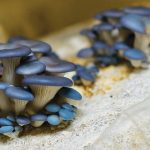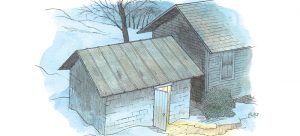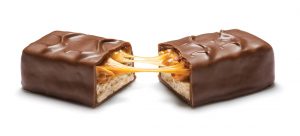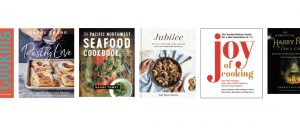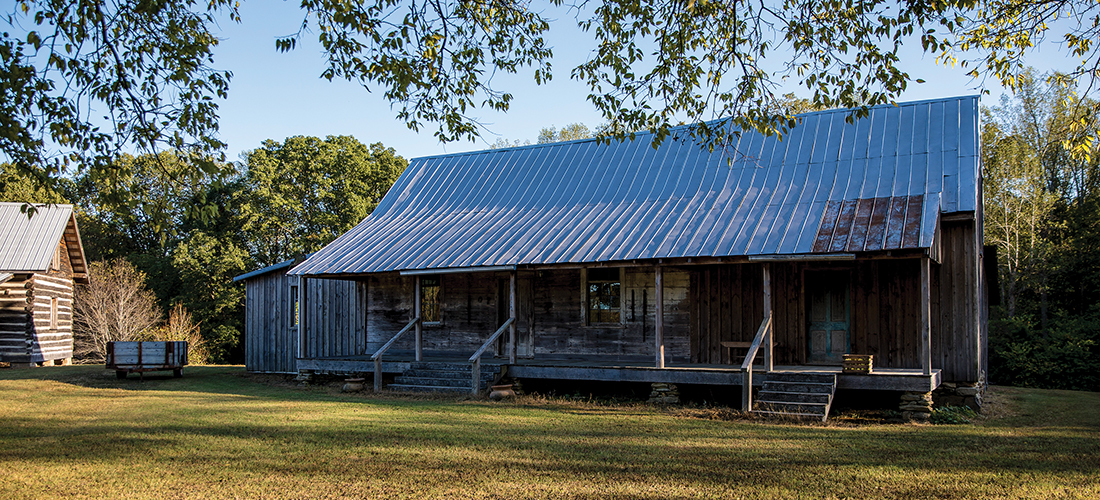
What was Thomas Jefferson’s favorite kind of apple? Ask science teacher David Vernon, who runs one of the top heirloom apple nurseries in the nation
By Maria Johnson • Photographs by Bert VanderVeen
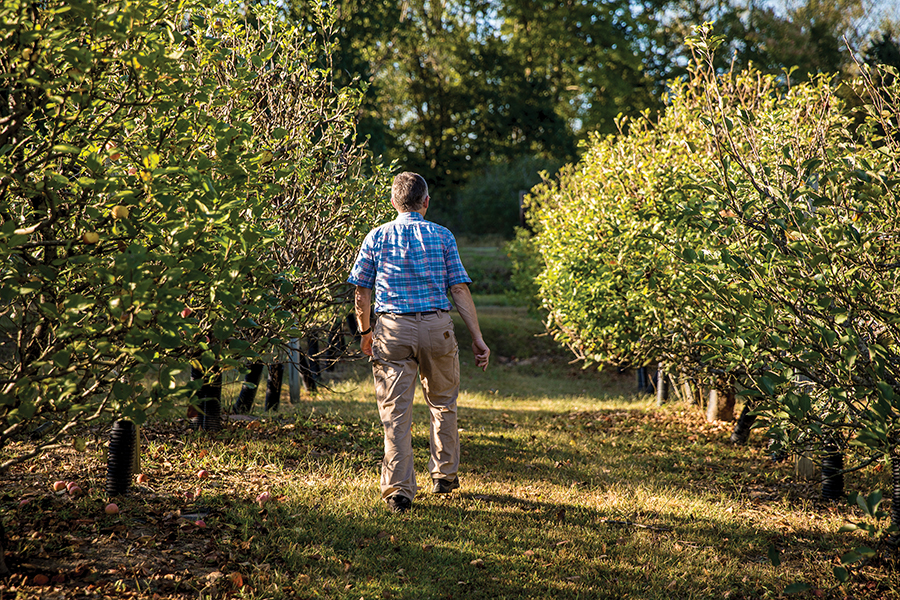 David Vernon is an apple guy.
David Vernon is an apple guy.
Not an Apple guy as in, he prefers Apple phones and computers to, say, Android products. He’s an apple guy in the pre-Steve Jobs way: a man who knows his way around the edible fruit. Bitten with passion for his subject, he is one of the country’s top growers and sellers of heirloom apple trees, varieties that have flowered and flourished in the United States for generations.
At his relatively small Century Farm Orchards in Caswell County, about 20 miles due north of Burlington, Vernon specializes in cultivating old Southern apple trees, which grow well in the heat and humidity of the lower right quadrant of the country. Many of the varieties carry names just as colorful and inviting as the fruit they yield.
Virginia beauty.
Smokehouse.
Aunt Rachel.
Carolina red June.
Black twig.
Magnum bonum.
“The vast majority of what we have is rare or unique,” says Vernon, who celebrates the nursery’s 20th anniversary this year. “We’re horticultural artists, if you want to call it that.” The artistry involves grafting cuttings of scarce trees onto rootstock to produce clones of the parent trees, a necessity if you want to produce apples of a certain variety.
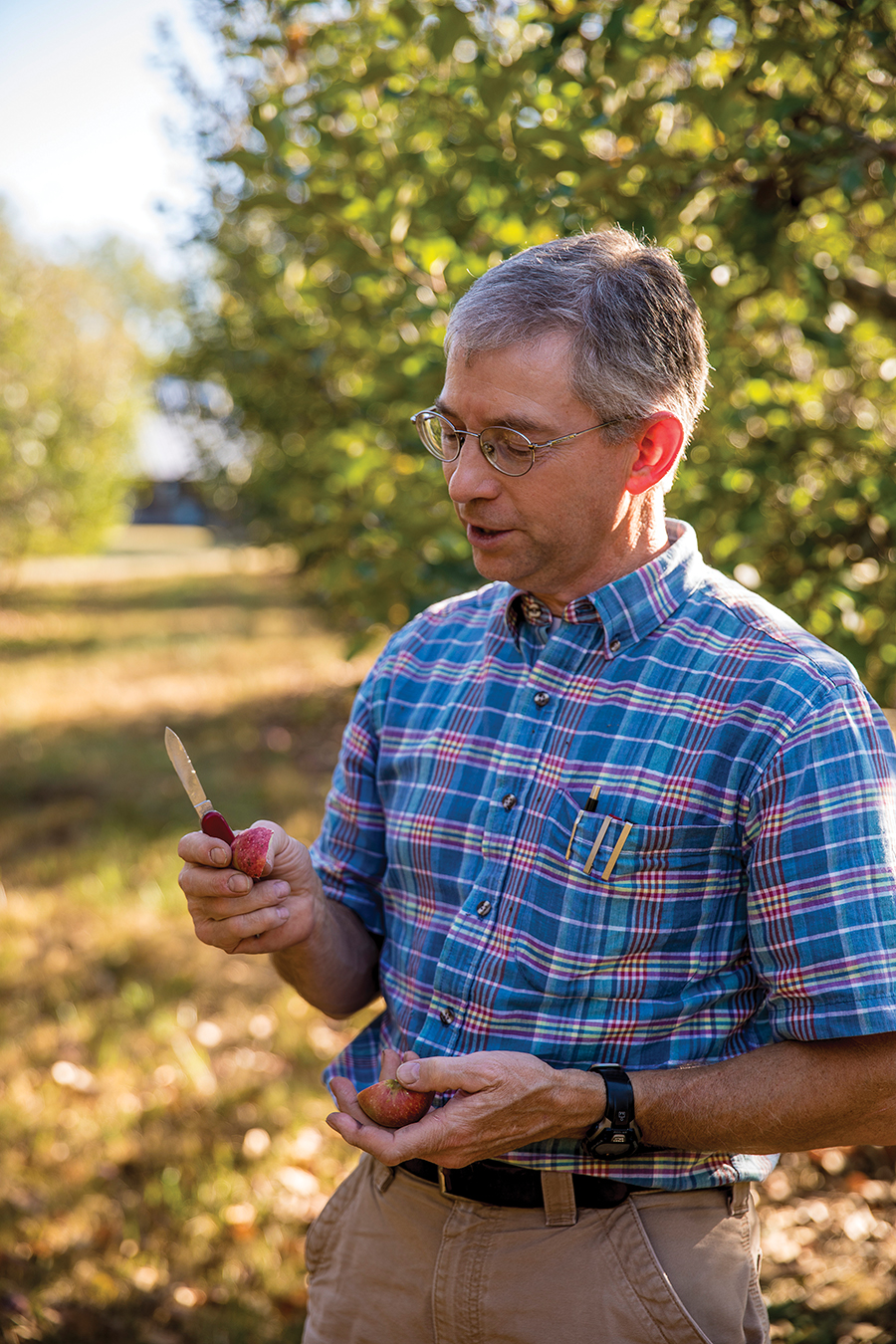
Sitting on the front porch of his farm house in a metal fan-back chair that’s painted — what else? — apple red, Vernon explains the genetics of his success. A customer buys a grafted tree, say a Virginia beauty. To produce fruit, that tree must pollinate with a different kind of apple tree — even a crabapple will do — within a quarter mile or so. No worries. Bees do the work. The grafted tree bears Virginia beauty apples. But the seeds of those apples will not grow up to be Virginia beauty trees. The saplings will be genetically unique. Just like children.
The upshot: If you want to grow guaranteed Virginia beauty apples, you have to start with a grafted Virginia beauty tree.
Therein lies the heart of Vernon’s business, which ships about 10,000 heirloom trees annually. “We do have a niche,” says Vernon, who also teaches Advanced Placement chemistry and physics at Western Alamance High School. He considers both jobs — science teacher and nurseryman — closely related.
“A farmer is a kind of scientist, whether he wants to admit it or not,” says the 49-year-old Vernon, who grew up in the country, a few miles from where he sits. His parents were schoolteachers, but Vernon spent summers helping neighbors and uncles in the tobacco fields. “It was labor intensive,” he says. “I came to know the value of hard work.”
He started dabbling in apples after buying half of his grandparents’ 400-acre tobacco farm in the mid-1990s. Vernon noticed that five lone apple trees grew in scattered spots on his land. With the help of his grandmother, mother and aunts, he identified the trees as varieties that had been planted in the 1880s and 1890s.
Sweetnin’, for example, produces a crisp sweet apple, a favorite snack during the fall tobacco harvest. Yellow June yields a soft cooking apple, one of the first of the season to ripen. Another variety, Summer banana, generates a small, flavorful yellow apple. Mary Reid gives a dry, tart irregularly-shaped apple that’s popular in the Reidsville area while Rockingham Red, developed in the Ruffin area, produces an acidic fruit suited for cider.
The next step, in Vernon’s mind, was to plant an orchard based on those trees. “I said, ‘I gotta learn to graft,’” he says. That’s how he became friends with Lee Calhoun, who literally wrote the book on the subject, Old Southern Apples, now in its third printing. A career Army man, Calhoun took up apple growing in retirement, after buying a plot of land near Pittsboro. He remembers talking to an older man in town. “He said, ‘When I was a boy, we had apples you don’t see anymore. They just sort of disappeared,’” says Calhoun, now 85. “That piqued my interest.”

Calhoun and his wife, Edith, started collecting cuttings from all over the South. “If we heard about an old apple tree we’d been looking for, we got in the car and drove off,” says Calhoun. They built a nursery with 426 varieties of known Southern apples, which Calhoun defines as fruit grown in the region before 1920.
“They’re survivors,” says Calhoun, noting that all apples are easier to grow in cooler climates. Many can withstand Southern summers, but they do produce smaller fruit that matures faster and is more vulnerable to disease and pests.
“At lower altitudes, it’s more of a struggle,” says Calhoun. “You have to sort of lower your sights.”
Calhoun taught Vernon how to graft. He was thrilled to know a younger person who was eaten up with old Southern apples, too.
“Heirloom apples needed somebody, and David turned out to be the one,” Calhoun says. “David is the classic example of a student who surpasses his professor.” As their friendship grew, Calhoun supplied Vernon with cuttings from his orchard. Vernon also received cuttings from Tom Brown of Clemmons, an apple sleuth who has tracked down over 1,000 varieties of old Southern trees and passed along more than 60 to Vernon.
In 1999, Vernon launched his own nursery business.
He figured he could make more money by growing and selling apple trees than he could by getting a master’s degree in teaching and relying on that to pay off his farm mortgage. He remains, however, a teacher at heart. His website is heavy on education, with how-to videos and helpful links alongside a catalog of available trees.
Though he has collected more than 500 varieties over the years, Vernon grafts only 100-plus types for sale every year.
Go ahead, call him a modern-day Johnny Appleseed, the nurseryman who introduced apple trees to the upper East Coast around the turn of the 19th century. Like his predecessor, Vernon wants people to appreciate the trees that have supported people and wildlife for centuries.

He outlines a quick history: Apples, as we know them, sprang up in mountains of Central Asia, in the area now known as the Republic of Kazakhstan, a former Soviet state. Roman conquerors took the fruit back to Europe, and immigrants schlepped the trees and seeds to the American colonies, where the indigenous apples looked more like crabapples. The newcomer apples were a full-service fruit, good for snacking, cooking, drying, pressing into juice and cider, both hard and soft, and eventually fermenting into vinegar. Ruined fruit went to hogs and horses. Deer and other game were attracted to the trees.
Prior to the early 1900s, most apples were consumed close to where they were grown. Then, around 1915, refrigerated train cars appeared, which meant apples could be transported long distances. Commercial apple production followed. Aided by pesticides and fungicides, the industry focused on growing large unblemished fruit that kept for a long time. That standard persists today.
Sometimes Vernon takes homegrown apples to school as snacks for his students. Many of them won’t touch fruit that’s misshapen, soft or spotted with harmless fungus; Vernon sprays the bare minimum of chemicals in his personal orchard. When students do sample the apples, they’re shocked.
“The flavor is so intense,” Vernon says.
He sells the majority of his trees — 3-foot tall, bare-root plants packed in boxes custom-made by Box-Board Products in Greensboro — to individuals and hobbyists eager to try heritage fruit.
He also ships trees to historical gardens looking for period plantings. His customers include Colonial Williamsburg; Monticello, the home of Thomas Jefferson; and Mount Vernon, the estate of George Washington.
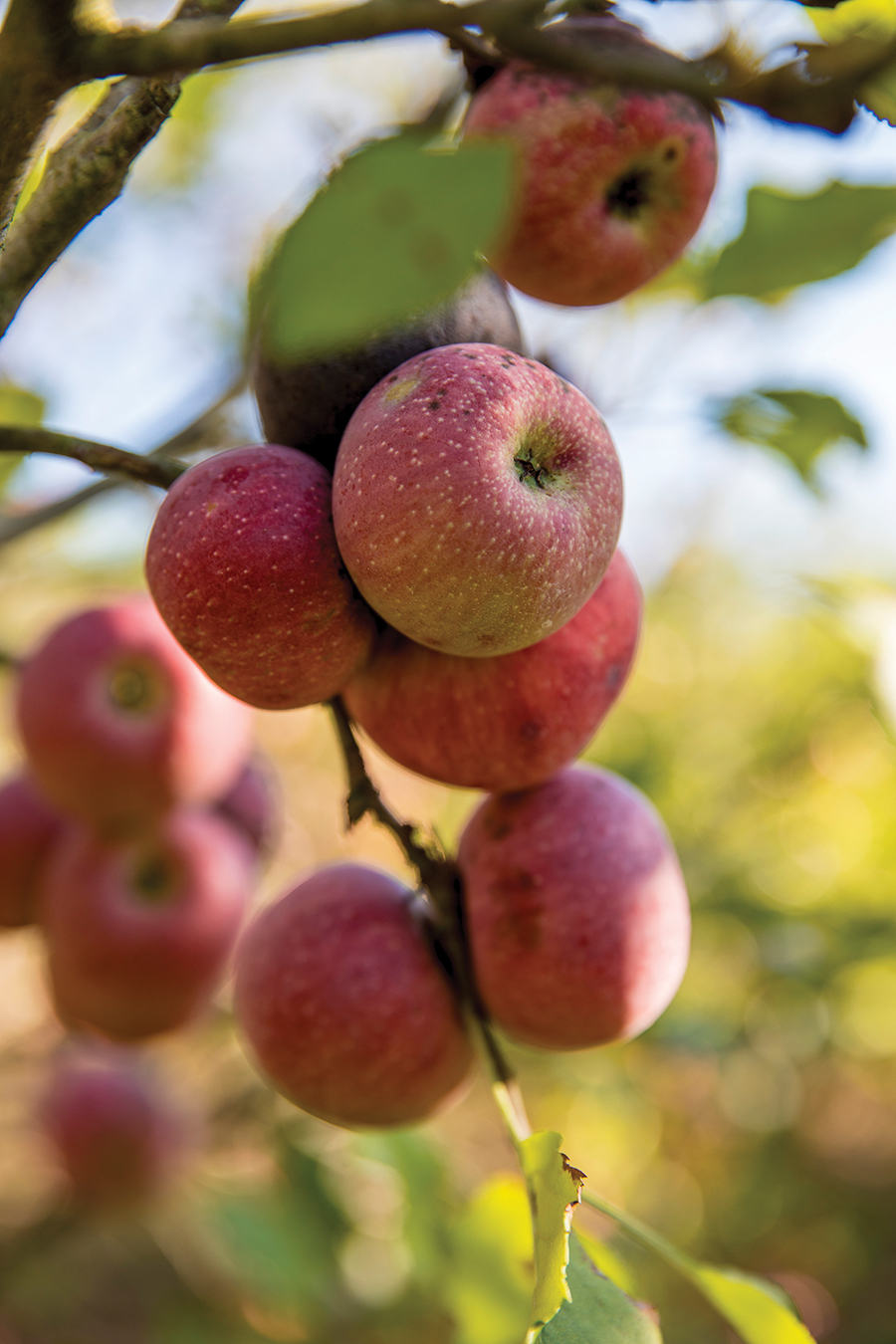 Vernon does custom grafting, too. Historical properties pay him to propagate their stock. Sometimes, he keeps a few grafts with their permission.
Vernon does custom grafting, too. Historical properties pay him to propagate their stock. Sometimes, he keeps a few grafts with their permission.
“This is Thomas Jefferson’s favorite cider apple,” Vernon says, pulling a Hewe’s crab from a tree in his orchard.
He walks down the row.
“This is his favorite eating apple,” he says, plucking an Esopus Spitzenburg. “It has exceptional flavor.”
You don’t have to be a former president to get Vernon’s attention. Individuals hire him to graft grandma’s apple tree, and universities use him to get reliable, healthy trees for horticultural research, “That tells you how much trust they put in us,” Vernon says, counting his mother and father, Janice and Cy, his cousins and high school students as helpers.
They open the farm to the public on the first three Saturdays in November. On those days, they offer free cider and apple tastings. They also sell trees and baked goods. His aunt Grey provides fried apple pies that she makes from scratch. She sets up shop in the farm’s original 1790 homestead, down the hill from Vernon’s home. “I’ve seen people go, buy one pie, come outside, eat it, then go back in and buy 20 more,” Vernon says. “We have people who drive up and bring a blanket and have a picnic.”
Especially in the fall, Vernon visitors drop in on Century Farm Orchards thinking it’s a pick-your-own operation. No such luck, but people can buy as much picked fruit as they want on open-house days, as Vernon explained to a young man who drove up in vain on a recent Saturday afternoon.
“Come back in November!” Vernon hollered to the guy from his porch. “We’ll have a lot of apples.”
He added a footnote under his breath.
“And I’ll shave that day.” OH
Maria Johnson is a core contributor to O.Henry. She can be reached at ohenrymaria@gmail.com.
For more information about Century Farm Orchards, go to centuryfarmorchards.com. Open houses are scheduled for November 2, 9 and 16.


